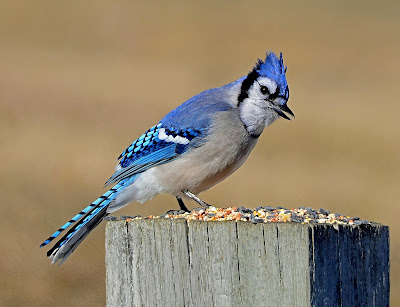Nature News: Sea pickle thrives in salt marsh
 |
| Late season sea pickles are brilliant red against the salt hay |
I live just down the road from a salt marsh. The salt marsh hay is yellowish brown now and lying over in those distinctive cowlicks. Walking on it, I always feel like a flea walking on the back of a dog. Here and there bright red sea pickles poke through, adding some lively color to an otherwise monochrome scene.
I learned about sea pickles when I first moved to Maine. My kids and I liked to eat them (they taste like tiny pickles) during our ramblings through the marsh. While working at the Wells National Estuarine Reserve, I discovered their importance as a salt marsh indicator species.
Sea pickles (also called glasswort, samphire, saltwort, or, scientifically, as Salicornia species) and Spartina grasses (salt marsh hay and cord grass) are the most common salt marsh plants and have worldwide distributions. These plants are halophytes (plants adapted to salty conditions) and are also pioneer species, meaning they are usually the first plants to settle in a mudflat and begin its evolution (ecological succession) into a salt marsh.
These pioneers help stabilize the mud and deliver oxygen down into the mud through their roots, allowing other species to settle: sea lavender, sedges and grasses and the like. Sea pickles are one of the few species that can grow in salt pannes, those pools on top of salt marshes characterized by extreme temperature changes and high salinity. That's usually where I find them in established salt marshes.
Sea pickles are smooth, fleshy, salt-tolerant plants with jointed, branching stems. They range in color from green in the summer to deep crimson red in the fall.
The leaves aren’t obvious. They are those scaly things hugging the stem. Sea pickles and cacti belong to the same scientific order, Caryophyllales. I was surprised when I learned this. It seems odd: Cacti are adapted to dry, desert conditions and have all those special adaptations to help hold water; sea pickles live in a salt marsh, surrounded by water. But the problem is, they live in salt-water environments.
Living in salt water is like living in a desert — the salt content of the water causes plants to be more likely to lose water than take it in. This has to do with osmosis (something we’re covering this week in my Biology class). Water tends to move across membranes from areas of high water concentration to areas of lower concentration.
The inside of cells often have more water than the surrounding saltwater. Therefore, plants (and animals) that live in salt water tend to experience a net loss of water from their tissues and need adaptations to help retain water. The fleshy stem of the sea pickle helps it do just that. By accumulating water in its tissues (that’s what "succulent" means, according to the Oxford English Dictionary), they dilute the salt concentration — a key adaptation to exceptionally harsh and salty conditions.
As to their edibility, sea pickles are edible and have a long history of human use as a food and in medicine. The problem with consuming them these days is you really shouldn’t be tromping around in a salt marsh. These are fragile environments that we need to protect, and, with all of the possible contaminants in the water, it is wise to steer clear of direct harvesting.
That said, I have to quote author Hank Shaw (from the book "Hunt, Gather, Cook"), as his description of eating sea pickles can’t be beat: “An especially good place for steamers was right where a little spring emptied into the bay. And stretched out alongside the runoff of that spring was a gigantic bed of what my family called saltwort. I remember munching on the tips of this plant as a boy, and loving the salty, crunchy brininess they had. It was like eating low tide — if low tide didn’t stink of rotting seaweed, fish and crabs.”
Published November 1, 2016 in The York Weekly/Portsmouth Herald/York County Coast Star/Fosters Daily Democrat and the Exeter Herald


Comments
Post a Comment